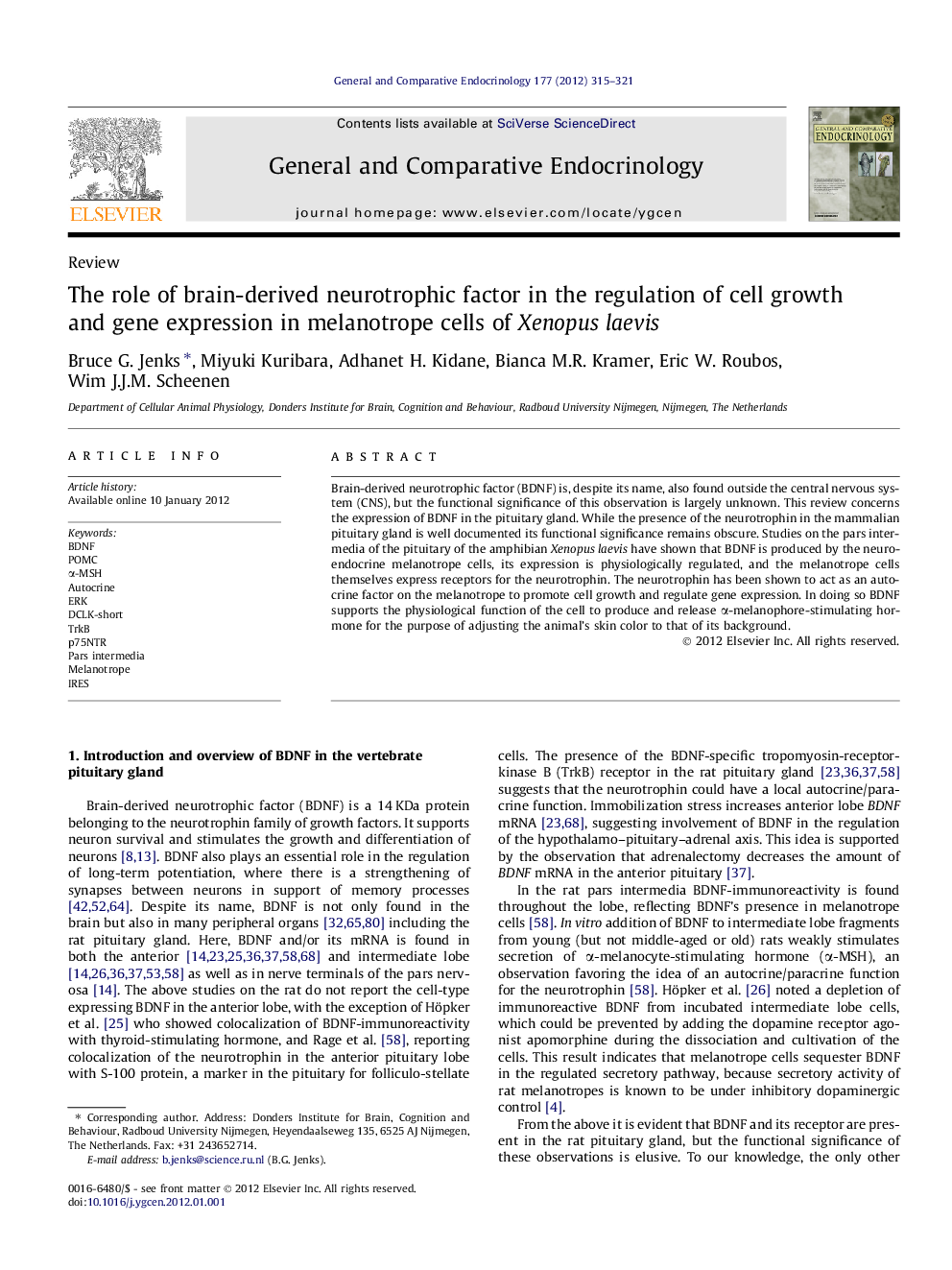| Article ID | Journal | Published Year | Pages | File Type |
|---|---|---|---|---|
| 2800626 | General and Comparative Endocrinology | 2012 | 7 Pages |
Brain-derived neurotrophic factor (BDNF) is, despite its name, also found outside the central nervous system (CNS), but the functional significance of this observation is largely unknown. This review concerns the expression of BDNF in the pituitary gland. While the presence of the neurotrophin in the mammalian pituitary gland is well documented its functional significance remains obscure. Studies on the pars intermedia of the pituitary of the amphibian Xenopus laevis have shown that BDNF is produced by the neuroendocrine melanotrope cells, its expression is physiologically regulated, and the melanotrope cells themselves express receptors for the neurotrophin. The neurotrophin has been shown to act as an autocrine factor on the melanotrope to promote cell growth and regulate gene expression. In doing so BDNF supports the physiological function of the cell to produce and release α-melanophore-stimulating hormone for the purpose of adjusting the animal’s skin color to that of its background.
► We give a review of the literature concerning the presence of BDNF in the pituitary gland. ► We give an overview of our studies concerning the function of BDNF produced by the Xenopus melanotrope cell. ► We show that the neurotrophin acts as an autocrine factor to regulate melanotrope cell growth and gene expression.
